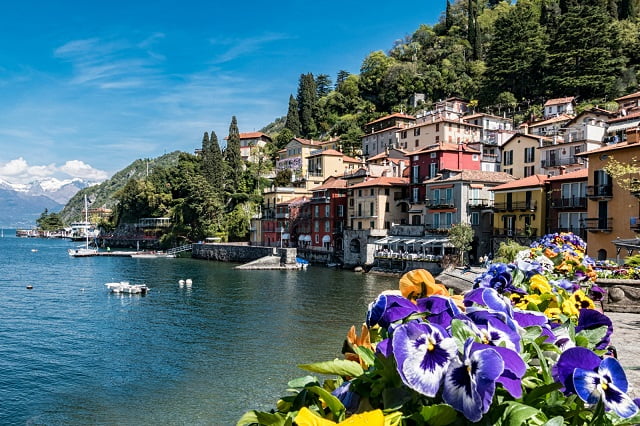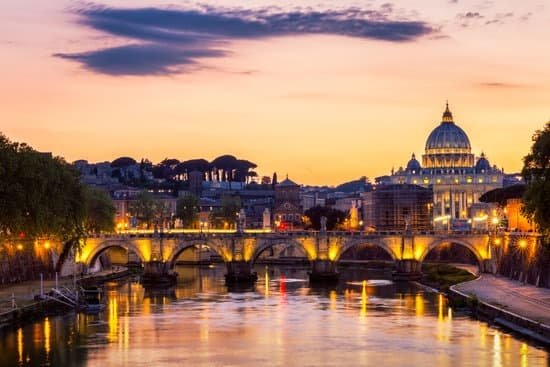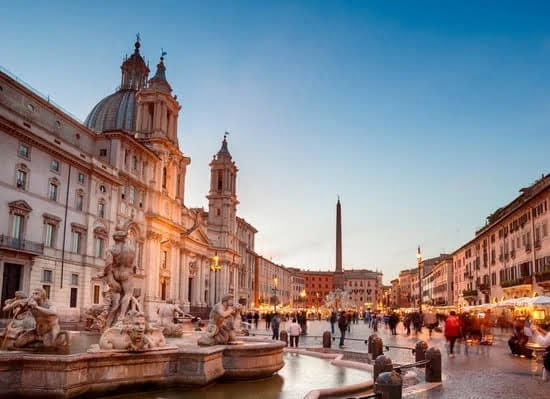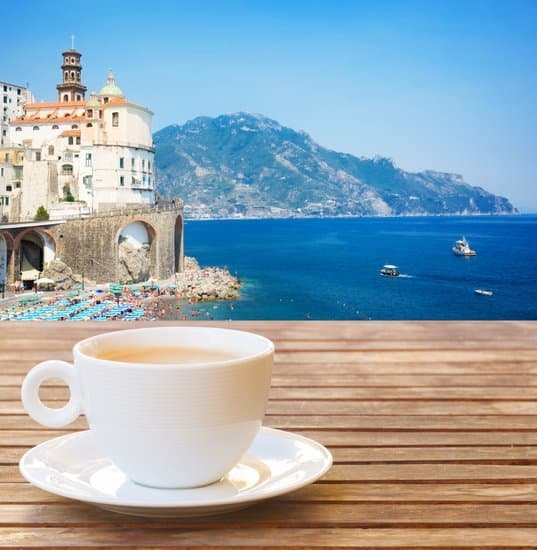
The best places to visit in Italy vary from vibrant cities such as Rome, Venice and Florence, to spectacular coastal regions like Amalfi Coast and Lake Como. The country is overflowing with iconic tourist attractions, beautiful scenery, delicious food, stunning architecture and fascinating culture that you would be hard pressed to find anywhere else. Whether you’re looking for a romantic getaway or a fun-filled family vacation, Italy has something exciting for everyone.
Rome: Eternal City Rome is one of the eternal cities of the world and a must-see destination in Italy. Here you’ll find timeless architectural wonders like the Colosseum and Pantheon, endless museums full of ancient artifacts, art galleries with priceless Renaissance paintings and sculptures, baroque palazzos along the Tiber riverbanks and world-famous landmarks like St Peter’s Basilica at Vatican City.
Other top attractions include exploring multi-layered Piazza Navona filled with baroque palaces and fountains; attending performances at Teatro di Marcello; or taking in views atop Castel Sant’Angelo on the scenic hill overlooking Tyrrhenian coastal plain.
Venice: The Watery City Grand Canal is one of the top reasons people visit Venice – it forms an S shape across Venice’s oldest district connected by vibrant squares like Saint Marco Square used under colorful Italian Gothic buildings topped with campaniles as well as numerous bridges stretching over canals running beneath them.
Award winning restaurants like Trattoria Da Baluarda welcomes guests right near bridge leading them across smaller split separated canals between historical buildings – together forming some of best places to experience true Venetian art de vivre.
Grand Canal’s fishermen floating around daily until late night catches people’s attention from all around romantic city center blending them within seafaring environment locals inhabit from ages now.
Rome
No trip to Italy is complete without a visit to the historic city of Rome. From its iconic landmarks including the ancient Colosseum and Trevi Fountain, to the exquisite architecture of St. Peter’s Basilica and Pantheon, it offers an abundance of sights for anyone willing to explore. A stop here will allow any traveler to get a taste of the grandness of Ancient Roman history as well as its Renaissance period creations.
Colosseum
The Colosseum stands tall in Rome being one of the major tourist attractions in all of Italy. The impressive structure stands 30 metres high with its outer wall spanning 189 meters in diameter.
Today, it is regarded as one of Rome’s best-preserved monuments from ancient times, allowing travelers a chance to view its formidable presence up close. Despite having suffered numerous earthquakes and other incidents, there are still some renovated sections and corridors that can be explored inside, giving visitors insight into how large these events were that took place within such extravagant walls.
St Peter’s Square and Basilica
Situated at the heart of Vatican City lies St Peter’s square with Bernini’s colonnade giving travelers a distinctive experience when they gaze upon it for the first time. The most awe-inspiring part however isn’t just the outside view but what lies within it: St Peter’s Basilica.
A trip inside this colossal building will reveal amazing marble sculptures depicting both old testament stories and modern day figures alike which should leave any visitor with lasting memories impressed by their ingenuity and beauty.
Trevi Fountain
Rome is also home to another great landmark, albeit on a much smaller scale – The Trevi Fountain. This romantic and quirky masterpiece was created between 1732-1762 to celebrate an aqueduct bringing fresh water into Rome from Salone Mountain during ancient times.
Inspired by paganism themes, this beautiful fountain has been used in many movies over the years due its breathtaking textures mixed with lively sea creatures give it an unique feel that’s hard not be taken away by although its really compact size when compared to other popular attractions in Italy.
Exploring the Amalfi Coast
A picturesque coastal region stretching some 50 kilometers, the Amalfi Coast is tucked away in southern Italy’s Campania region and has been a favorite for vacationers and locals alike for many years. Accompanied by its glittering bays, pastel-colored clifftop villages, terraced lemon groves, and lush green hillsides, it’s no surprise why so many people flock to this paradisiacal destination year after year. Here are some of the best places to visit that make up the coast:
- Positano
- Amalfi
- Ravello
- Sorrento
The town of Positano is often heralded as one of the most beautiful on the entire coast, having been featured in movies like “Under the Tuscan Sun” and paintings such as Edward Hopper’s “Two Callas”. Its asymmetrical architecture makes it unique to its peers – whitewashed walls with hot-pink flowers piled onto cliff faces vying for attention.
Though it may be less than 10 kilometers from its neighboring towns, Positano’s winding roads ensure there’s always something new around each bend. From hidden private beaches accessed only by stairways or lifts to church spires nestled between historic villas and boutiques, visitors can enjoy breathtaking Mediterranean views as they explore all that this delightful gem has to offer.
Further down south lies Amalfi, an old fishing village brought into existence in the 8th century after being founded by inhabitants of neighboring Sorrento. As with many towns on this coast, Amalfi teems with rich religious history – built around a Benedictine monastery which later became home to Oficio paper mills.
Visitors can spend some time browsing through small specialty shops located within the labyrinthine alleyways before arriving at Cathedral Square – where bright-yellow bell towers proudly mark out their area against azure skies right above San Andreas’ striped façade. There is also plenty of opportunity for outdoor exploration such as taking a boat tour around Li Galli island or admiring the surrounding countryside from atop Mount Cerreto (the highest peak of nearby Monti Lattari).
Ravello is located higher up north boasting limestone carved pathways through olive gardens towards magnificently designed villas found along Via Roma street and lovely Santa Maria di Ravello Cathedral featuring clocks well over 900 years old – don’t miss out on their beautiful tourist destinations.
History loving adventurers must definitely pay a visit to Villa Rufolo – an 11th-century relic characterized by tumbled arches – whose legend claims it was visited by Richard Wagner himself who was inspired here for his opera “Parsifal”.
With nearby acoustically perfect amphitheaters providing performances all throughout summer season there really isn’t a better place in general vicinity than Ravello if music & art appreciation interests you.
Last but not least Sorrento marks southeastern shore of Amalfi Coast with crystal clear waters & typical panorama decorated by citrus fruit plantations spread across its hillsides; what stands out about this town is its traditional architecture fused energetic nightlives creating ideal balance between partygoers & admirers who take part in lively parades but also stroll down smaller alleys full of artisan work carried out locally.
Medieval Delights in Florence
Italy is an endlessly fascinating country for travelers. It is home to some of the world’s best food, art, culture, and history. But which cities should you visit if you are on a limited schedule? One of the most charming and must-see places in Italy is Florence. This magical city winds its way through hundreds of years in history, and one can get lost exploring all it has to offer.
Florence was once the hub of medieval trading in Europe, and vestiges remain around every corner. Imagine strolling back in time as you explore cobblestone streets leading to alleys lined with cafes, galore shops full of Italian goodies like pasta and limoncello, and beautiful Renaissance palaces where Florentines have wreaked in their glory days.
Cathedrals
The Duomo di Firenze needs no introduction – this iconic resting place houses many precious works of art from well renowned masters such as Michelangelo and Brunelleschi. Its pristine white edges juxtaposed against the orange ochre sky makes for a spectacular postcard opportunity any visitor must partake in before they leave town. Furthermore adjacent to it lies the Baptistery di Giotto, located near Piazza San Giovanni which serves as an important religious site that hosts large gatherings during Easter celebrations.
Museums
Thrill-seekers should definitely check out Uffizi Gallery ; this museum houses masterpieces from early renaissance era including Botticelli’s Birth of Venus; a delicate piece depicting Aphrodite’s origin story told through music, dance, sculpture, color & imagery. Moreover, Ponte Vecchio is another gem where old school tradesmen can be seen setting up shop near various trinket stores that occupy space along both sides of this magnificent bridge.
The Nature Barrier
Florence also proves as an escape into nature, being enveloped by the Apennines mountain range. Visitors keen on taking a scenic hike or those who want to seek refuge from city life should consider trekking up San Miniato hill whose summit overlooks gorgeous Tuscan scenery.
Alternatively those wishing for more adrenaline based activities could take a drive 30 minutes away to Fiesole ; here one can find themselves off-roading on dirt trails, camping in caves or splashing around in creeks set amongst tranquil meadows filled with pastoral horse-driven ploughs.
Visiting the Floating City of Venice
Venice, Italy is one of the most remarkable cities in the world. Boasting waterways instead of roads and dynamic culture, this floating city was once a thriving center for merchants and political power. Today, it’s renowned for its remarkable arcitecture and beautiful canals that gradually dip into the deep waters of the Adriatic Sea.
Venetian cuisine stands apart from the other Italian regions with polenta-based dihes such as Risi e Bisi along with squid ink risotto.
Stroll through ancient alleys and discover centuries-old cafes while perusing traditional food markets; perhaps you’ll have chance to sample Venetian specialties like Cicchetti or handmade Sarde In Saor, sardines marinaded in saurce sweet and sour sauce made from onions raisins and vinegar tyou can top it off with a glass or two of Prosecco: also native to this area.
There’s much more to Venice than just consuming traditional bites though. Must-see sights include Doge’s Palace – home to the ruler of Venice at one point – Saint Mark’s Basilica where visitors will find ancient mosaics depicting scenes of stories from centuries ago, Bridge of Sighs connecting Palazzo Ducale and Ponte dei Sospiri, Rialto Bridge spanning Grand Canal over width bridges arched grandly across either side. Here are some things you won’t want miss when visiting Venice:
- Doge’s Palace
- Saint Mark’s Basilica
- Bridge of Sighs
- Ponte dei Sospiri
- Rialto Bridge
Additionally, no visit would be complete without some authentic Venetian treats. The best way to take in all food Venice has offer is try it out on your own while exploring hidden gems down narrow alleyways – pasticceria (pastry shops), gelaterie (ice cream parlors) and trattorie (traditional restaurants). Whether your looking for traditional dishes like fresh seafood cicchetti or classic Italian food such as pizza or pasta – there truly is something for everyone here.
Food notables include spaghetti vongole (clam pasta), schie salse e olio (small fried shrimp in garlic parsley olive oil) & zuppetta di baccala (creamy stewed codfish). Those looking for pastry treats can choose from tiramisu, baba al rhum (rum cakes), susameli – light butter biscuit layered creamy custard & almond cereals.
Exploring Cinque Terre
Situated on the rugged coastline of Liguria, Italy, Cinque Terre is an area composed of five picturesque villages. The villages, which translate to “five lands”, are Riomaggiore, Manarola, Corniglia, Vernazza and Monterosso. Each village has its own unique charm with a mix of terraces full of brightly coloured houses cascading up the hillsides draped in vineyards and surrounded by olive groves.
The beauty and location of Cinque Terre make it one of the best places to visit in Italy for nature lovers. Every angle reveals another stunning view – from majestically soaring cliffs overlooking the sea to hidden forest trails dotted with wildflowers bursting with colour. Whether one chooses to explore on a bike ride or leisurely stroll along the pathway between villages, they will be rewarded with spectacular views at every turn.
Picturesque Trails
There is something special about unearthing unexplored paths through natural terrain that isn’t commonly crossed by visitors. One such path is the Via dell’Amore (Lover’s Walk), a 2 km stretch between Riomaggiore and Manarola that winds around a cliff side offering some of the most gorgeous scenes in all of Italy.
Trail number two (Sentiero Azzurro) also connects all five villages – trekking it in its entirety will take approximately 7 hours depending on how frequently one pauses for pictures. Other coastal trails connect too provides even more exciting options for keen hikers.
Local Cuisine
An ever-changing array of seafood dishes dominate menus featuring fresh catches like octopus salad or squid ink pastas accompanied by locally grown vegetables freshly plucked from nearby farms as well as handmade focaccia topped off with fruity local olive oil produced in hillside groves. As you savour local culinary delights don’t forget to look up and take in the breathtaking Mediterranean Sea views providing a peaceful backdrop to each delicious bite.
An evening alfresco dinner should not be missed.
Cultural Delights in Sicily
Tourists looking for a unique and enriching experience should look no further than Sicily as one of the best places to visit in Italy. Located at the crossroads of Europe, Africa and the Middle East, it has been home to civilisations dating back 3000 years. This is evident as you explore the region and witness a mix of Greek, Arab, Norman and Baroque influences in its magnificent architecture from Taormina’s ‘Teatro Antico’ to Palermo’s grand Cappella Palatina.
Taste-buds are sure to be tantalised with the incredible range of local delicacies such as Panelle (chickpea fritters) served with crispy golden Arancine filled with peas or savoury ricotta. Take part in some of the region’s cultural heritage; venture away from city centres and follow country lanes full of vivid blooms to experience life on an Italian farm.
Here tourists can get involved in harvesting or join a cooking course and learn how to make traditional pastas such as fresh Farfalle or classic Cannoli Siciliani filled with creamy ricotta cheese.
Mount Etna
Head up Mount Etna, Europe’s largest active volcano and designated UNESCO World Heritage Site, for an unforgettable journey crossing glistening lava fields before reaching snow-covered peaks towering 3300m above the sparkling Mediterranean Sea. Enjoy breathtaking vistas along well-marked paths guided by knowledgeable park rangers who will explain about volcanic activity and take visitors safely around eruptive sites like Silvestri Craters reached via 4WD jeeps.
If taking a break from trekking, don’t miss out on amazing views far out into the sea from Terrace View Bar which hosts regular music events against moonlight skies along this picturesque volcano.
Trekking Through the Dolomites
The Dolomites of Northern Italy are one of the most breathtaking places on Earth. This stunning mountain range stretches across the border between Austria and Italy, with steep rocky peaks rising from rolling green hills above.
For nature lovers, trekking through the Dolomites is a must-see. With its towering mountains, picturesque villages, and unspoiled landscapes, trekking here is an experience not to be missed. The trails range from easy walking paths for casual visitors to challenging summit routes for experienced mountaineers. The views along these trails vary greatly – from lush meadows blanketed in wildflowers to snow-capped summits above, you can take in all the beauty of the Italian Alps.
Trekking through the Dolomites offers a chance to explore this unforgettable region and its unique culture. Here are some of the best treks to include on your visit:
- Gardena Valley Circuit – A moderate route surrounded by towering views and plentiful waterfalls.
- Tre Cime di Lavaredo – A strenuous summit circuit around one of the most iconic spots in the Dolomites.
- Rifugio Contrin Trek – An easy walk full of local history that’s suitable for mixed abilities.
- Violet Trails Through Cortina d’Ampezzo – This routed blends cultural pit stops with dramatic scenery.
No matter which trail you choose, you’ll find that trekking through the Dolomites has something special to offer everyone. Each hike will reward you with an array of new adventures and sights – from quaint churches tucked away down narrow alleys to pristine lakes reflecting off surrounding peaks.
You’ll also get a glimpse into local culture as you travel through quaint mountain villages with their colourful houses and friendly locals. As you make your way up each peak, take time to savour all the majestic views along your journey; they are sure to leave a lasting impression.
Best Time To Visit Italy
If you are considering travelling to Italy, then the best time to go will depend on what you plan on doing while in Italy. Spring is a great season to visit for pleasant temperatures and plenty of cultural activities.
Summer months are popular hot spots in Italy where many tourists flock in from around the world. It can be quite busy during this time, so keep in mind that things may take longer if you plan activities during high peak seasons like July and August.
Weather
Italy has four distinct seasons throughout the year and the weather varies depending on which part of the country you visit. For example, summer is typically hot throughout Italy, and most areas experience daytime temperatures rising above 30 degrees Celsius (86°F).
Winters can be cold with night time temperatures frequently dropping below zero degrees Celsius (32°F) Although each region experiences different climates, nearly all have long sunny Mediterranean days with warm sea breezes coming off the waters of Northern Italy’s shorelines.
Cultural Experiences
No matter when you decide to travel to Italy there’s always something unique to experience when it comes to its culture and history. Rome is filled with ancient ruins such as the Colosseum and Pantheon that draw tourists from around the world year round, while Florence showcases its Renaissance era art and architecture as they have for centuries.
And let’s not forget about Venice – a city built completely out of water. Whatever it is that interests you about Italian culture there is no bad time to visit as it changes all year round catering towards those who call this area their home or who’s come from abroad for its beauty and experiences.
Conclusion
Visiting Italy is an unforgettable experience that will stay with you forever. From the bustling streets of Rome to the quiet countryside of Tuscany there is something for everyone throughout the entire Italian peninsula. Whether you’re looking for culture or cuisine, ancient ruins or stunning vistas, Italy has it all and should not be missed.
The ancient city of Rome boasts multiple sites to explore. The Colosseum represents the peak of Roman grandeur while the Pantheon temple remains a spectacular feat of engineering from antiquity. Thanks to its central location, Rome serves as an excellent starting point for travelers visiting Italy as it allows one to easily access other parts of the country by train or car.
Florence and Venice are also top tourist destinations in Italy that offer plenty of monuments and attractions worth seeing. In Florence, Renaissance-era sights such as Michelangelo’s David or Brunelleschi’s Dome can be found, while Venice attracts tourists with its beautiful canals and numerous plazas littered with cafes boasting some of the country’s tastiest pastries including cannolis and gelatos.
If you’re looking for something quieter than city life, then rural areas such as Umbria and Tuscany are great alternatives. These regions are perfect for those wanting escape into nature and spot views rarely seen elsewhere in Europe.
Both Viterbo and Orvieto villages in Umbria offer deep insight into small-town life, along with delicious local food which includes cured meats from Norcia, truffles from Spoleto, and some incredible olive oil produced by family owned businesses in the area. And lastly don’t forget some time at Lake Como where visitors can explore medieval villages surrounded by snowcapped mountains – an unforgettable setting which truly makes a visit to Italy complete.




